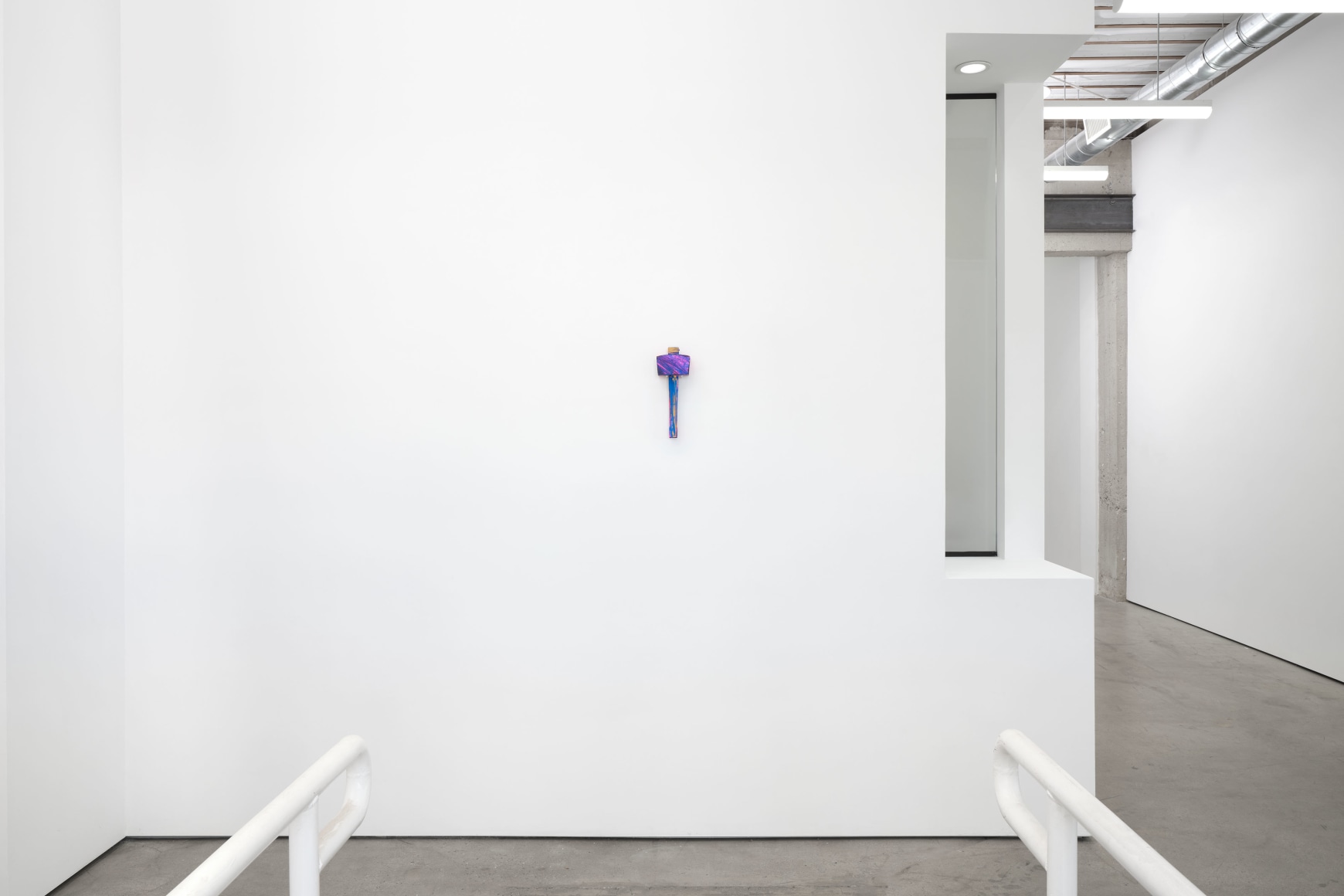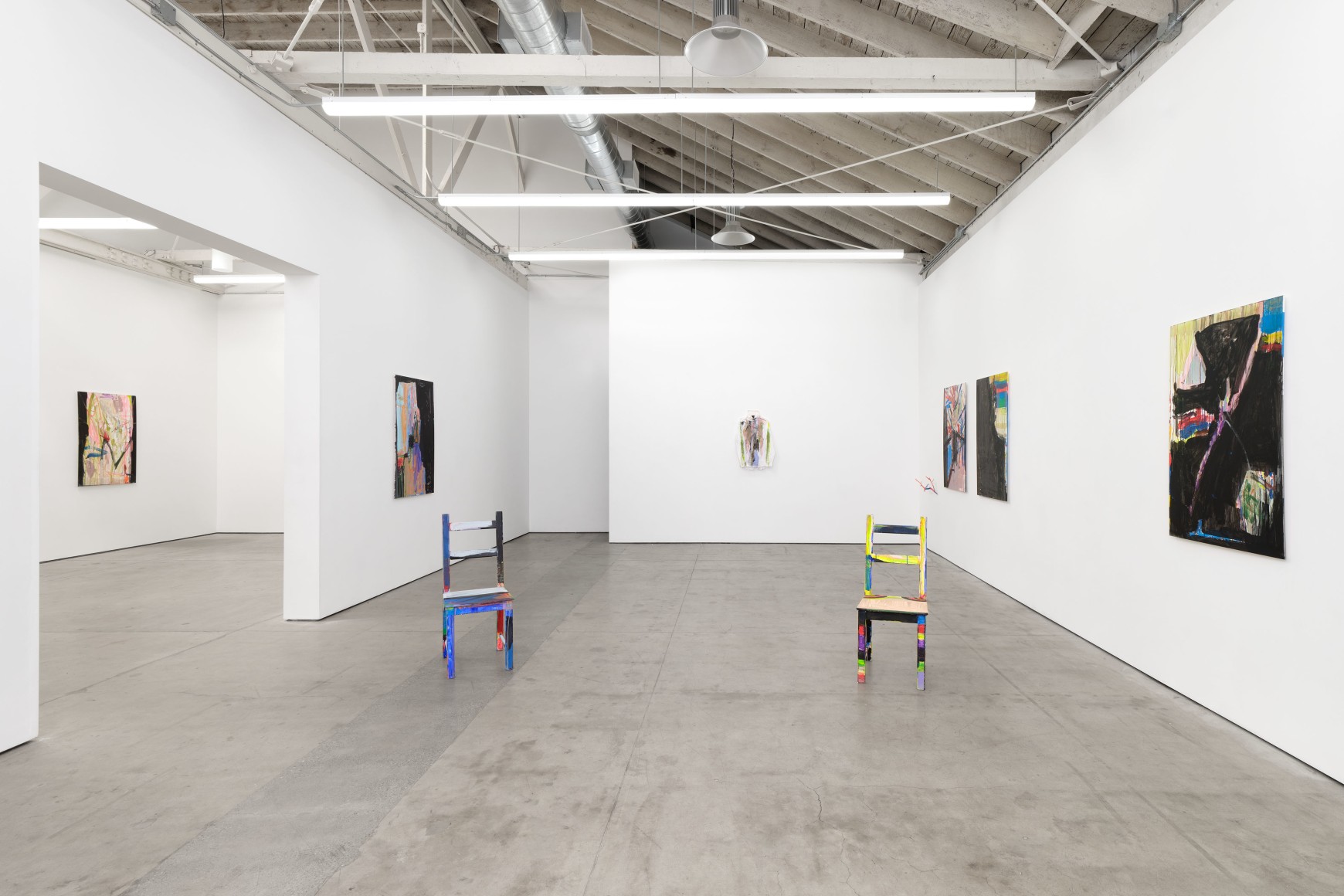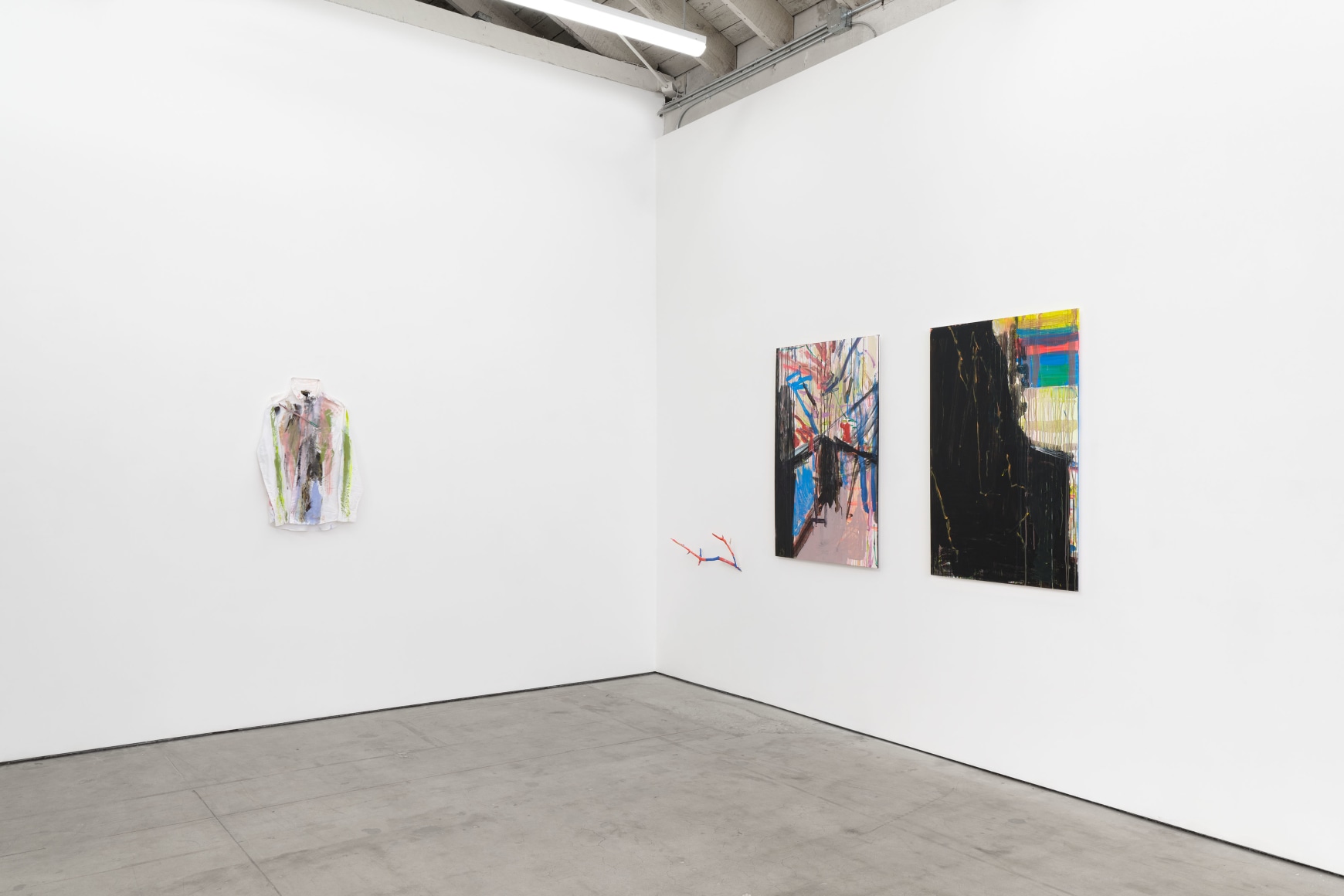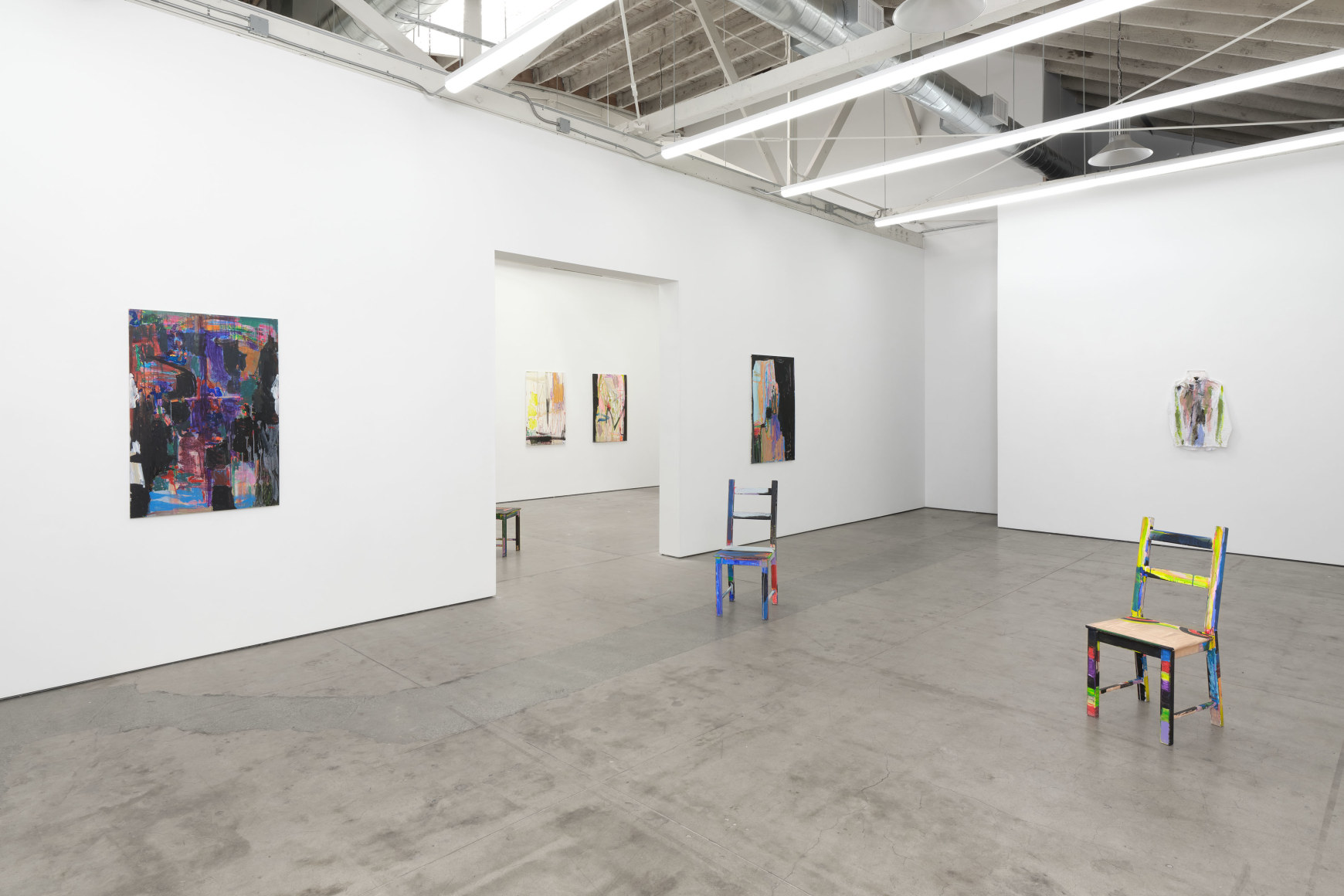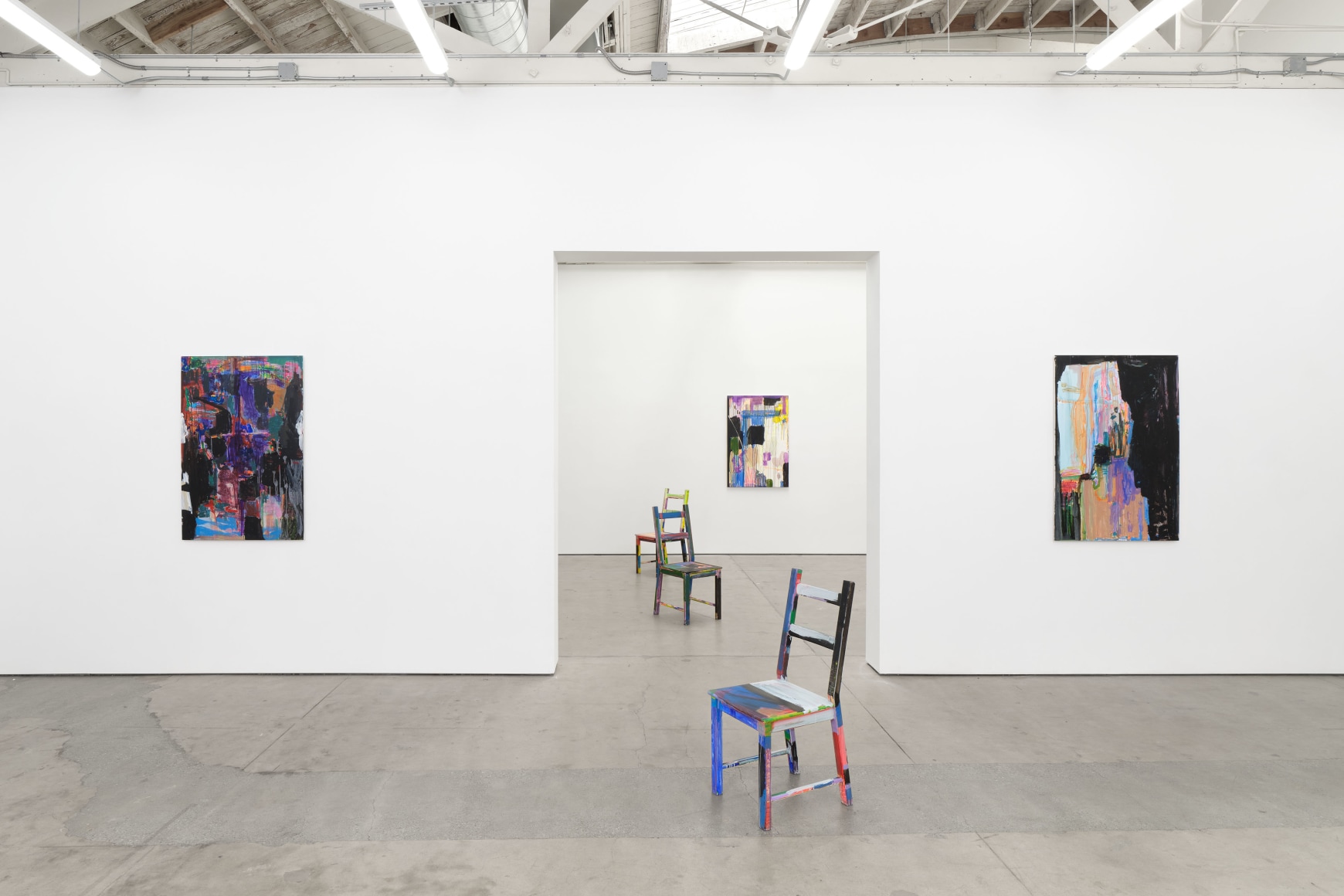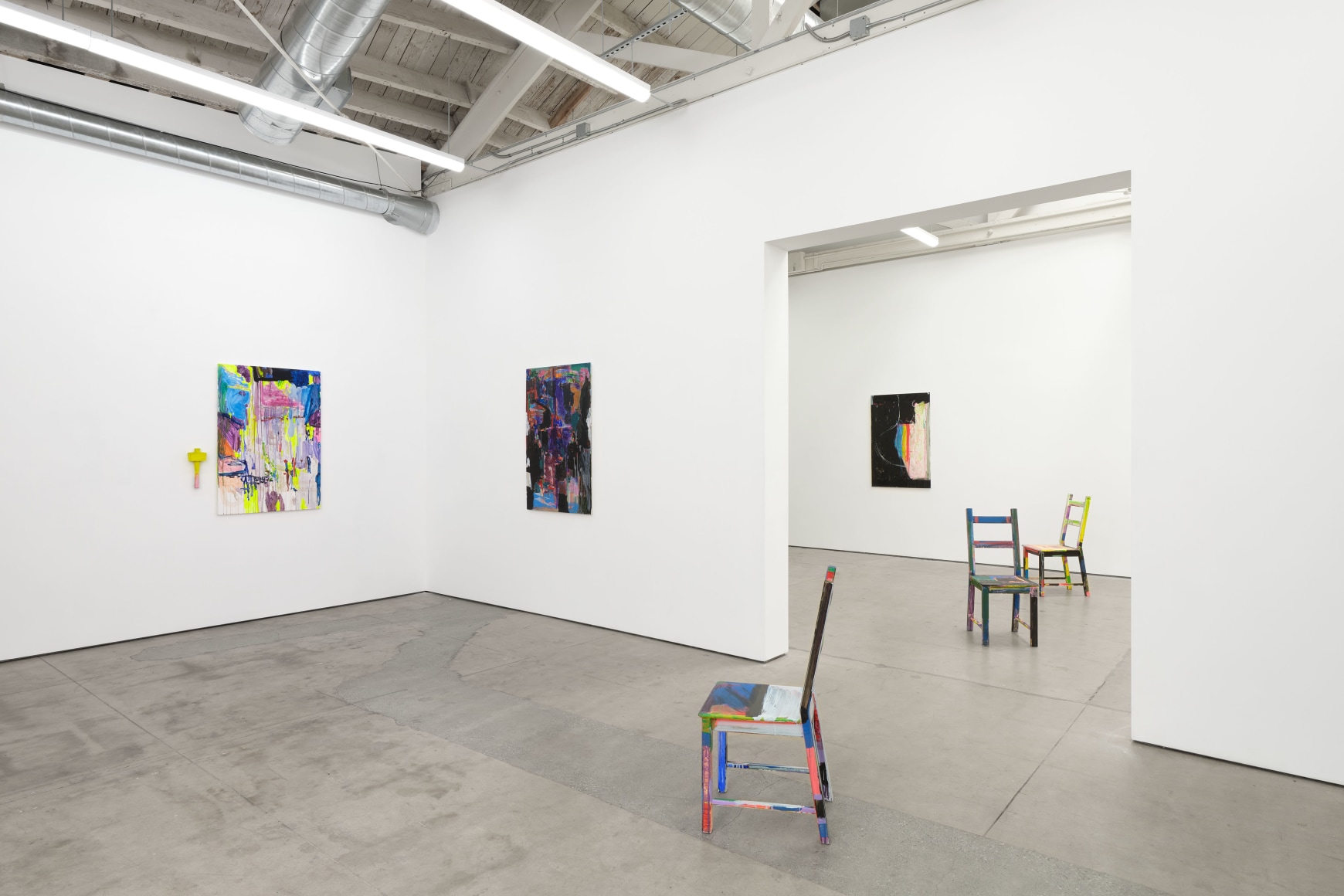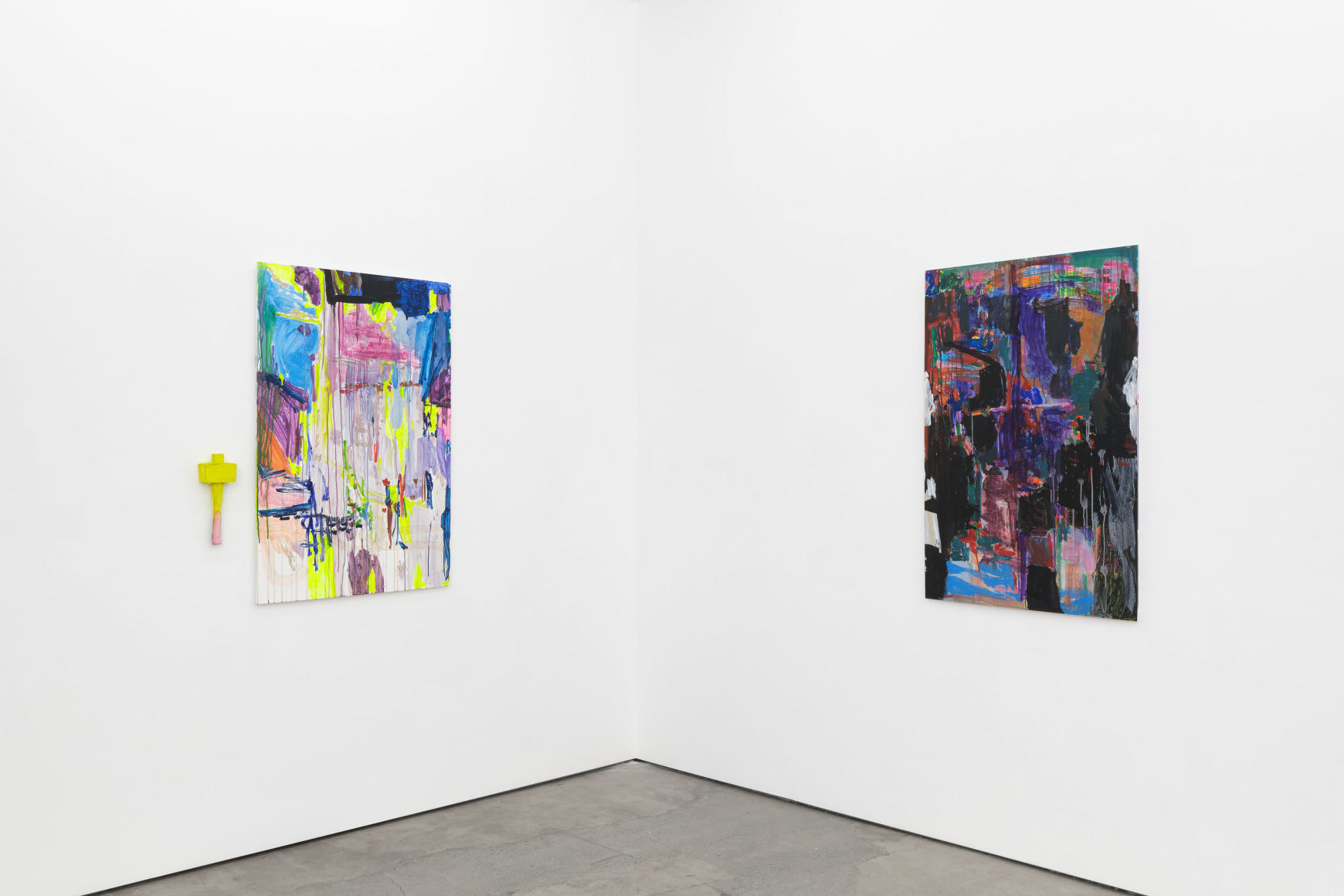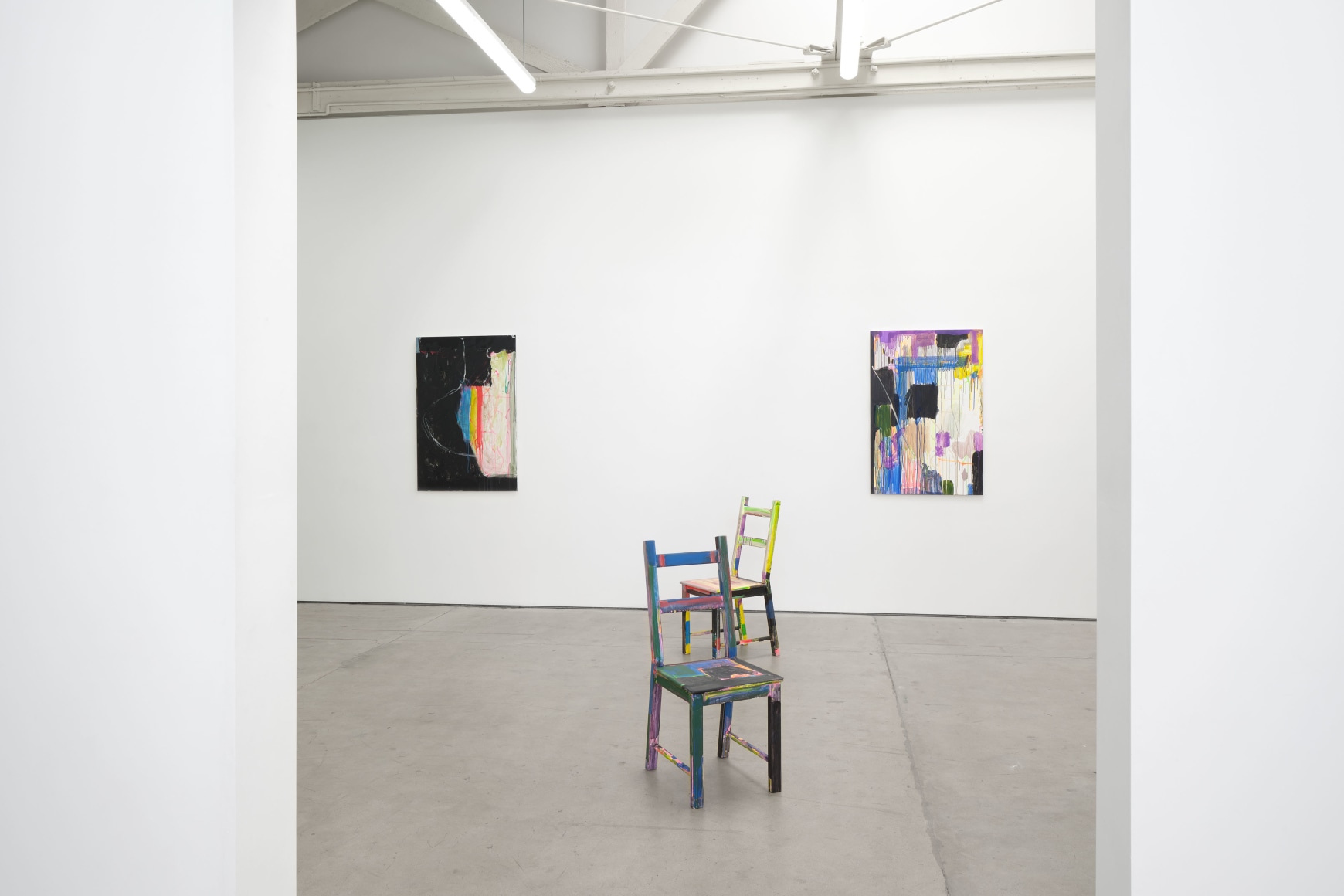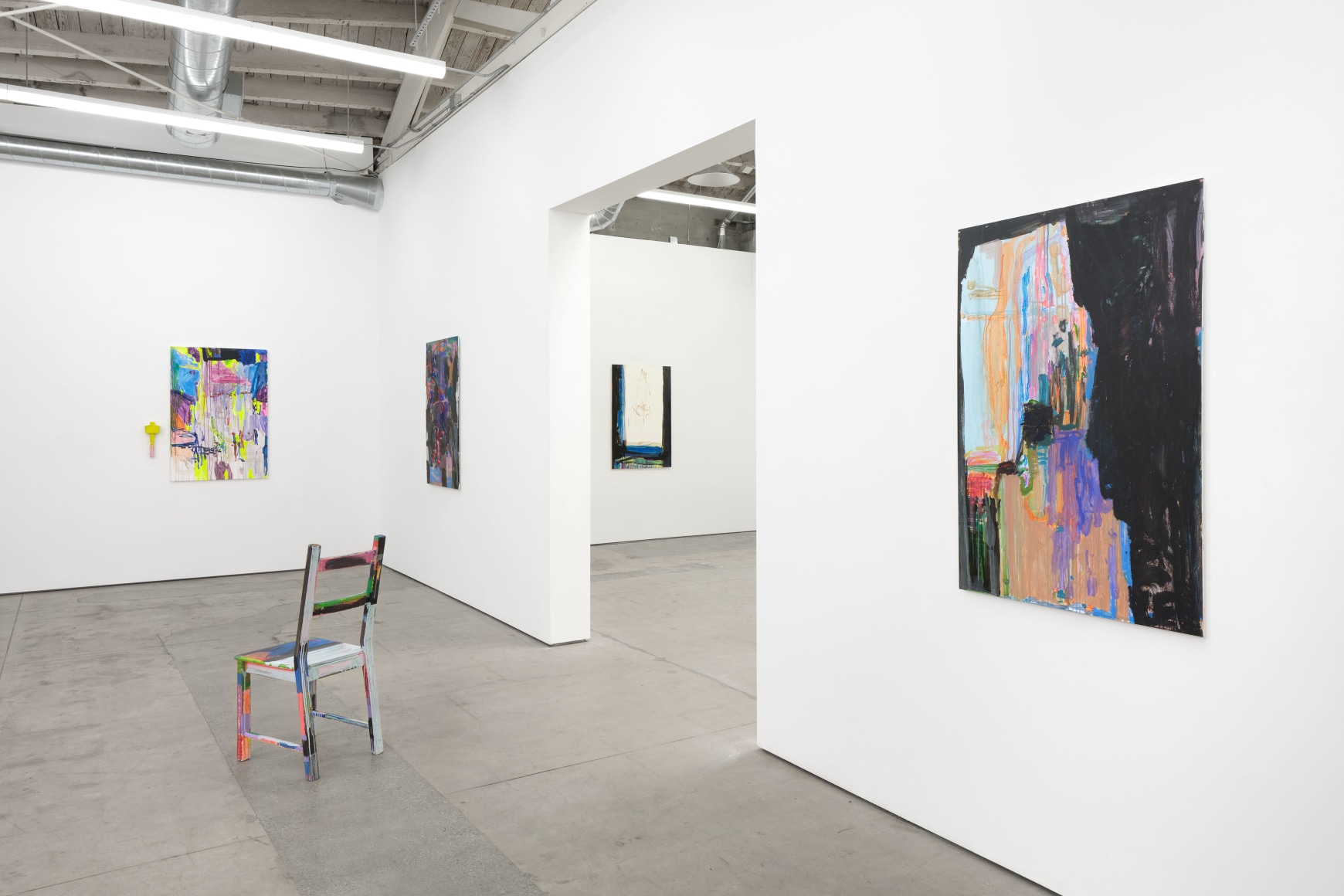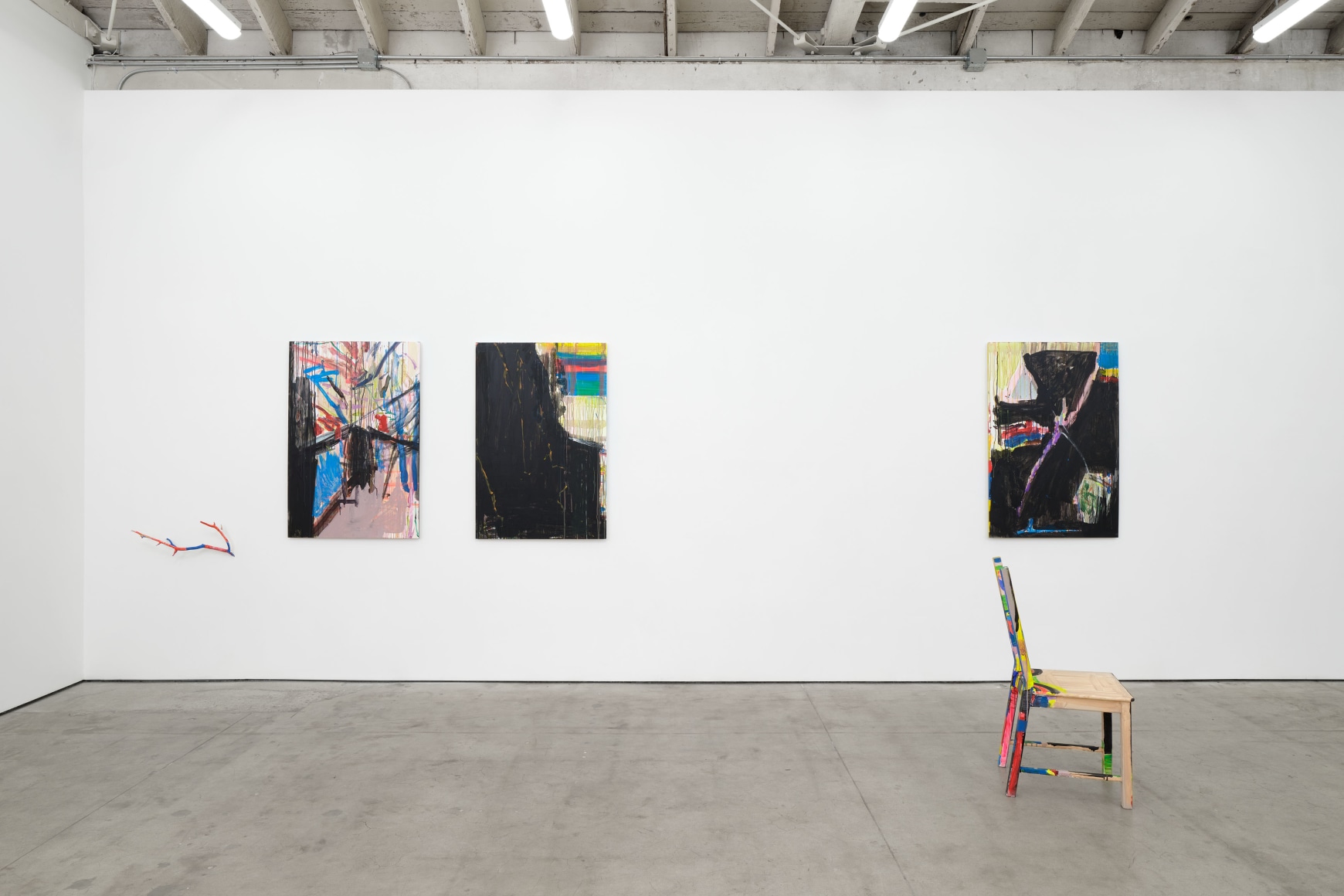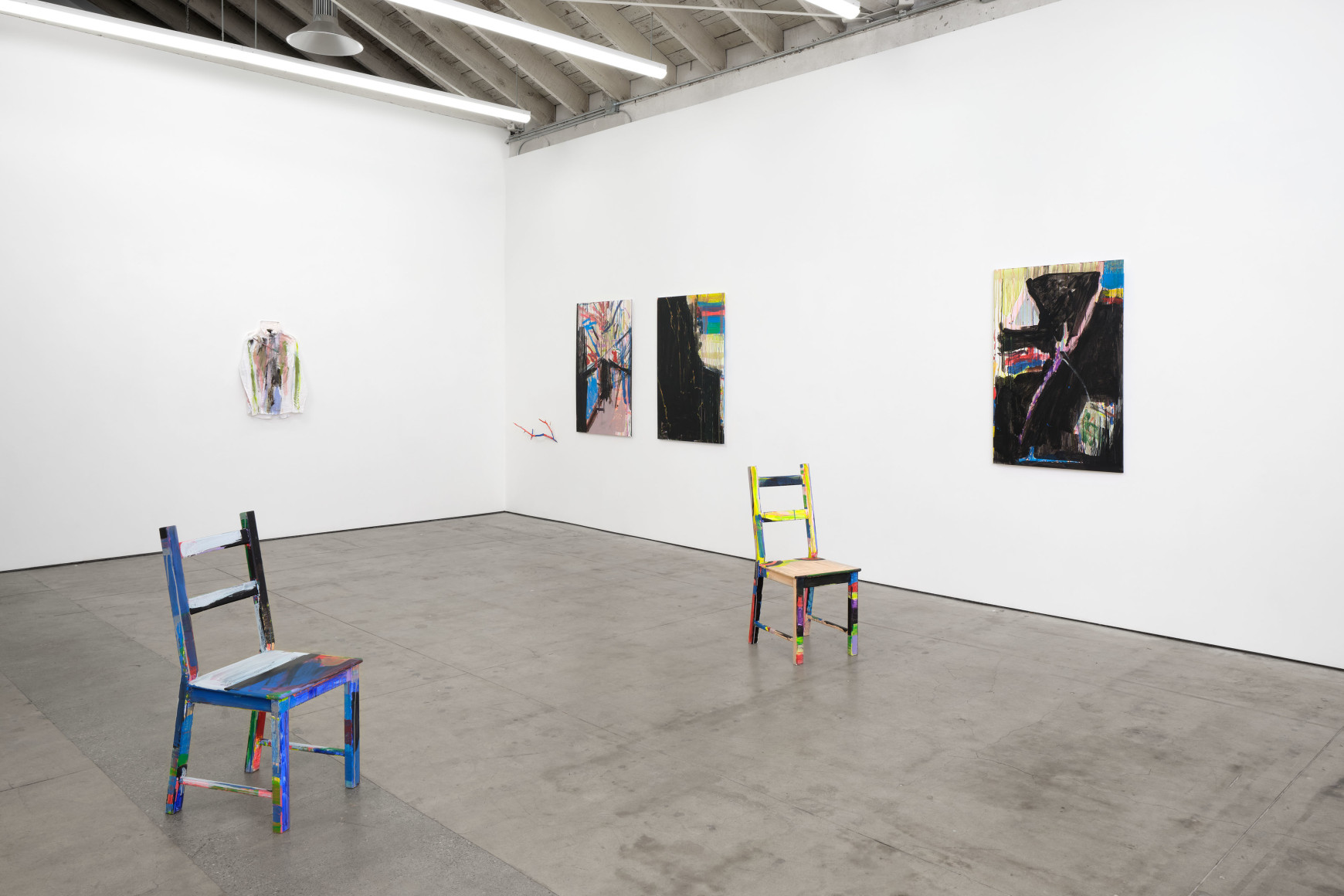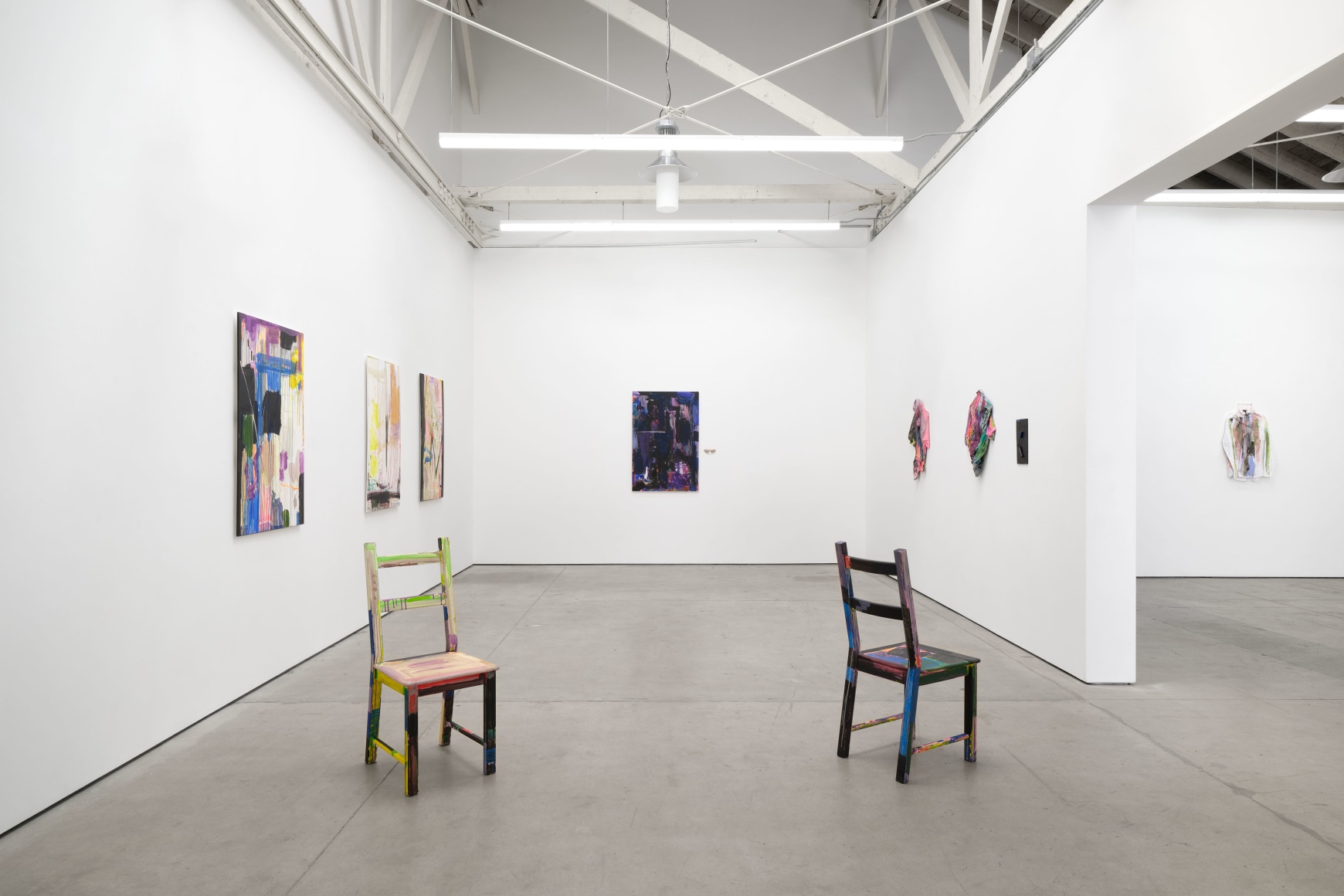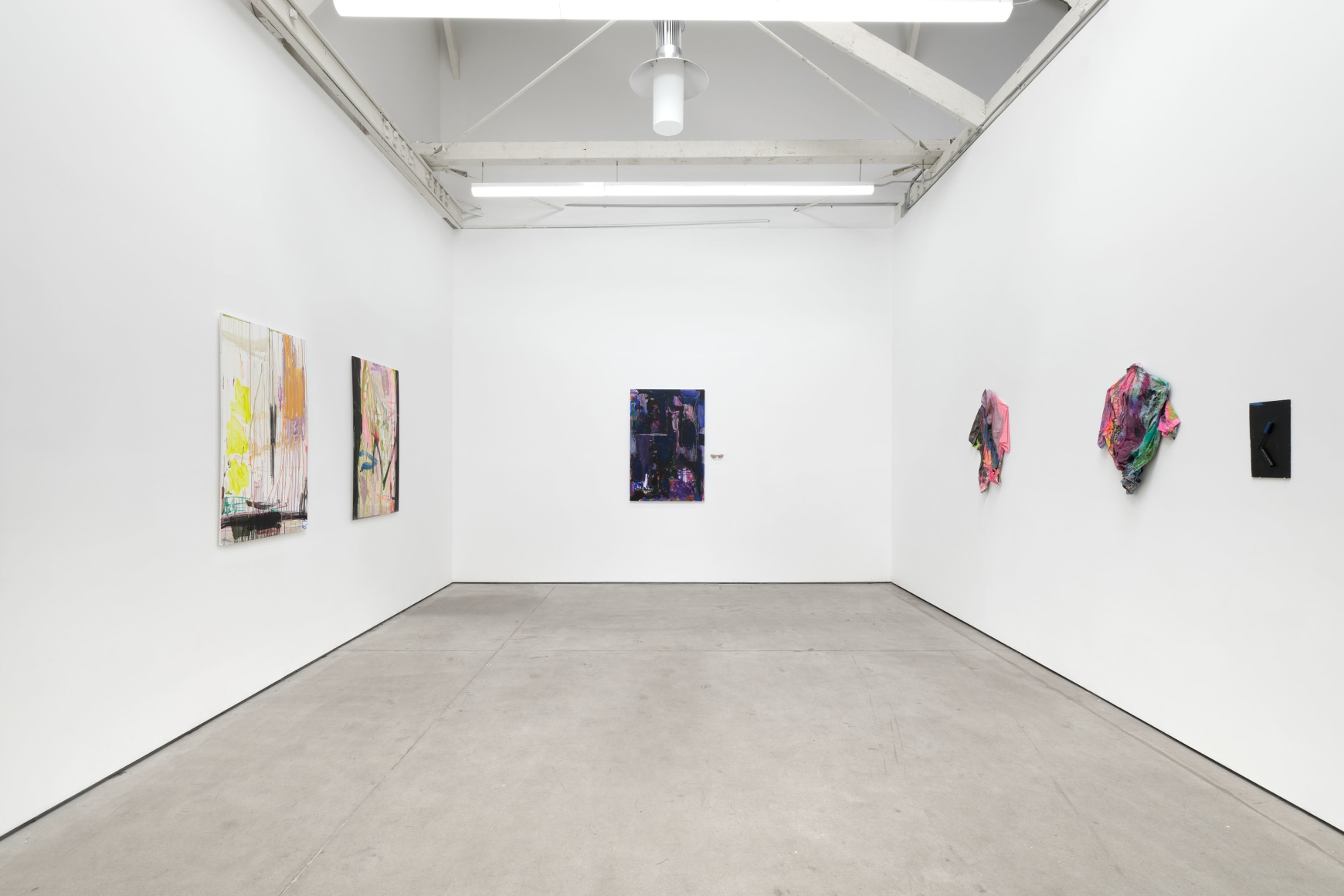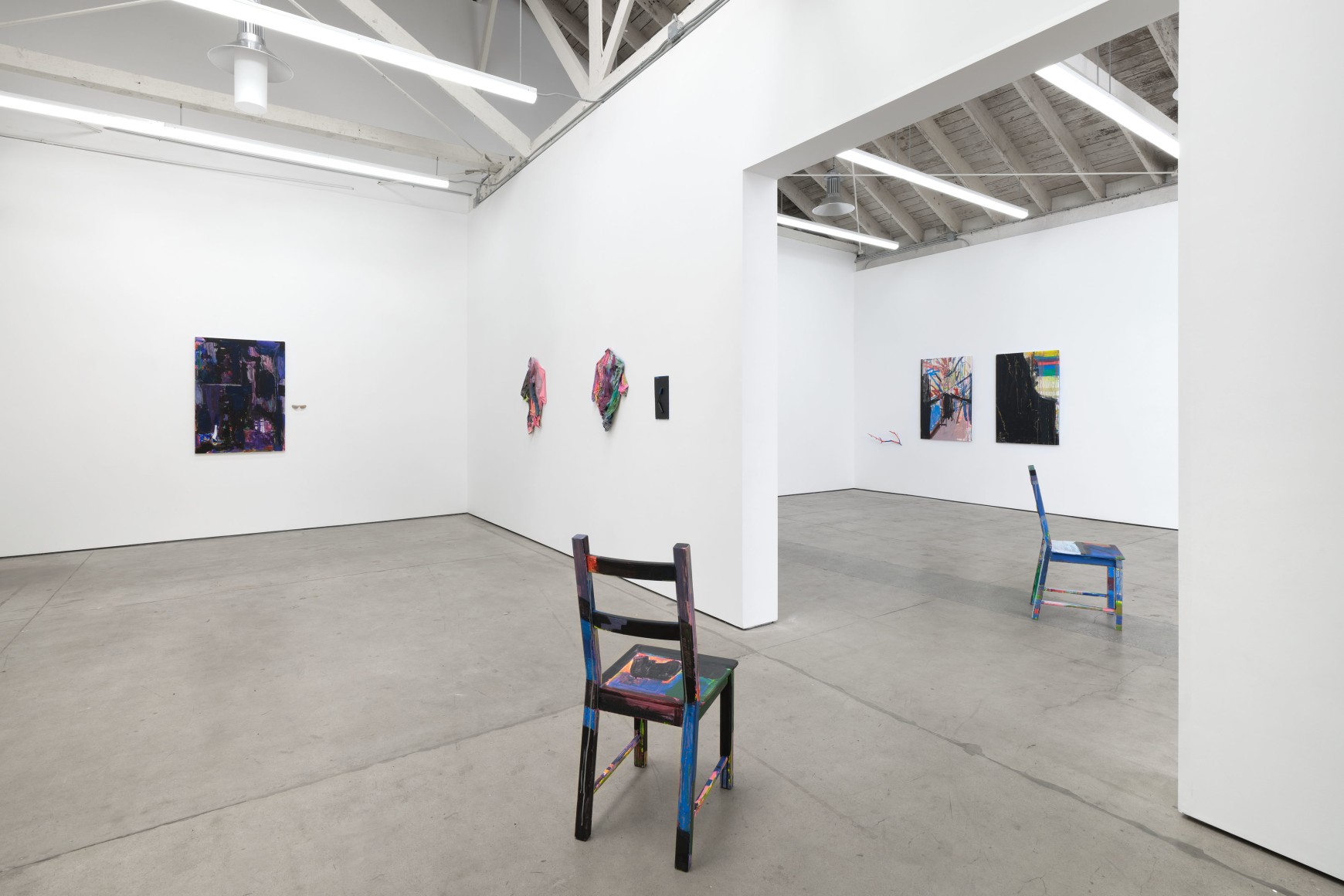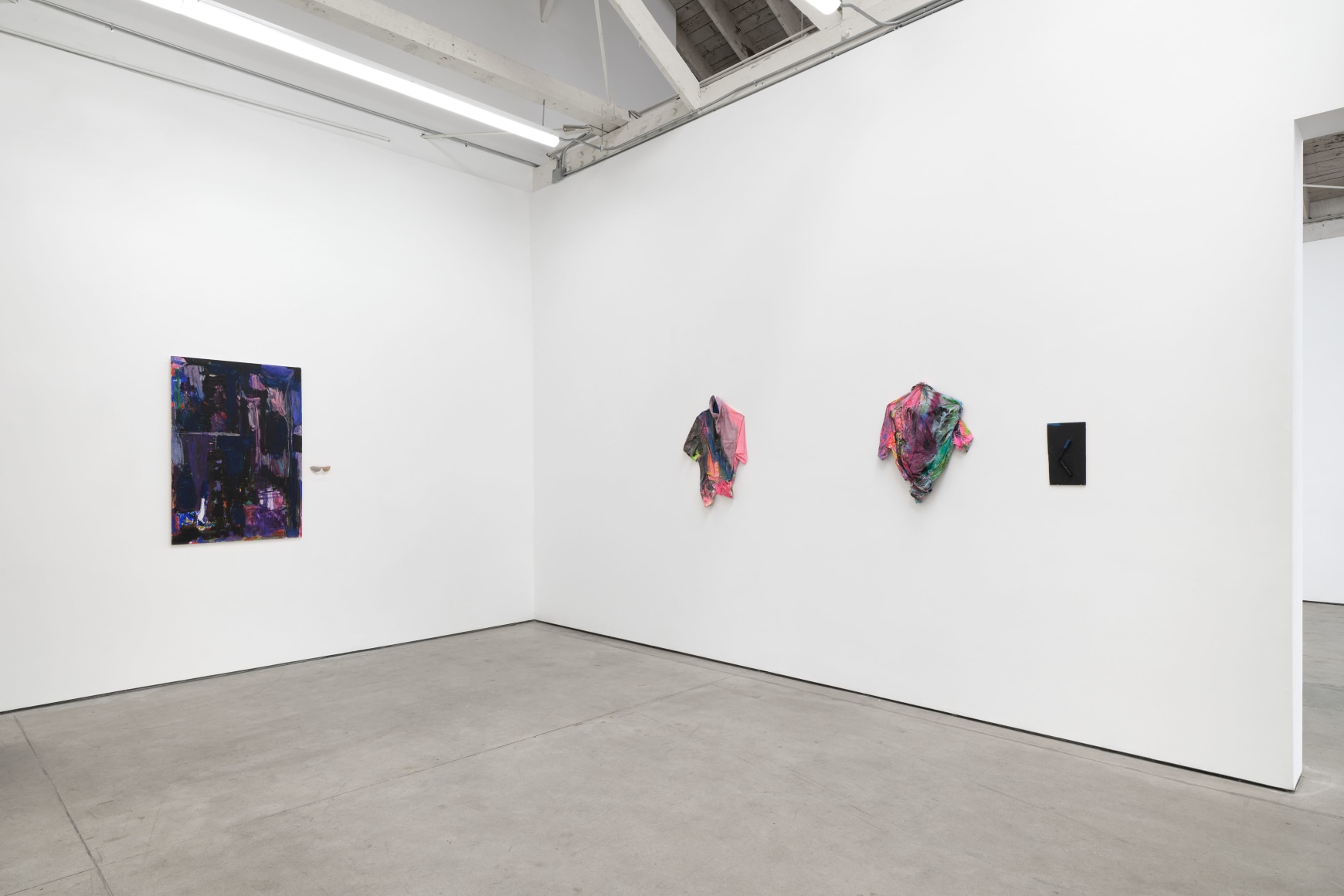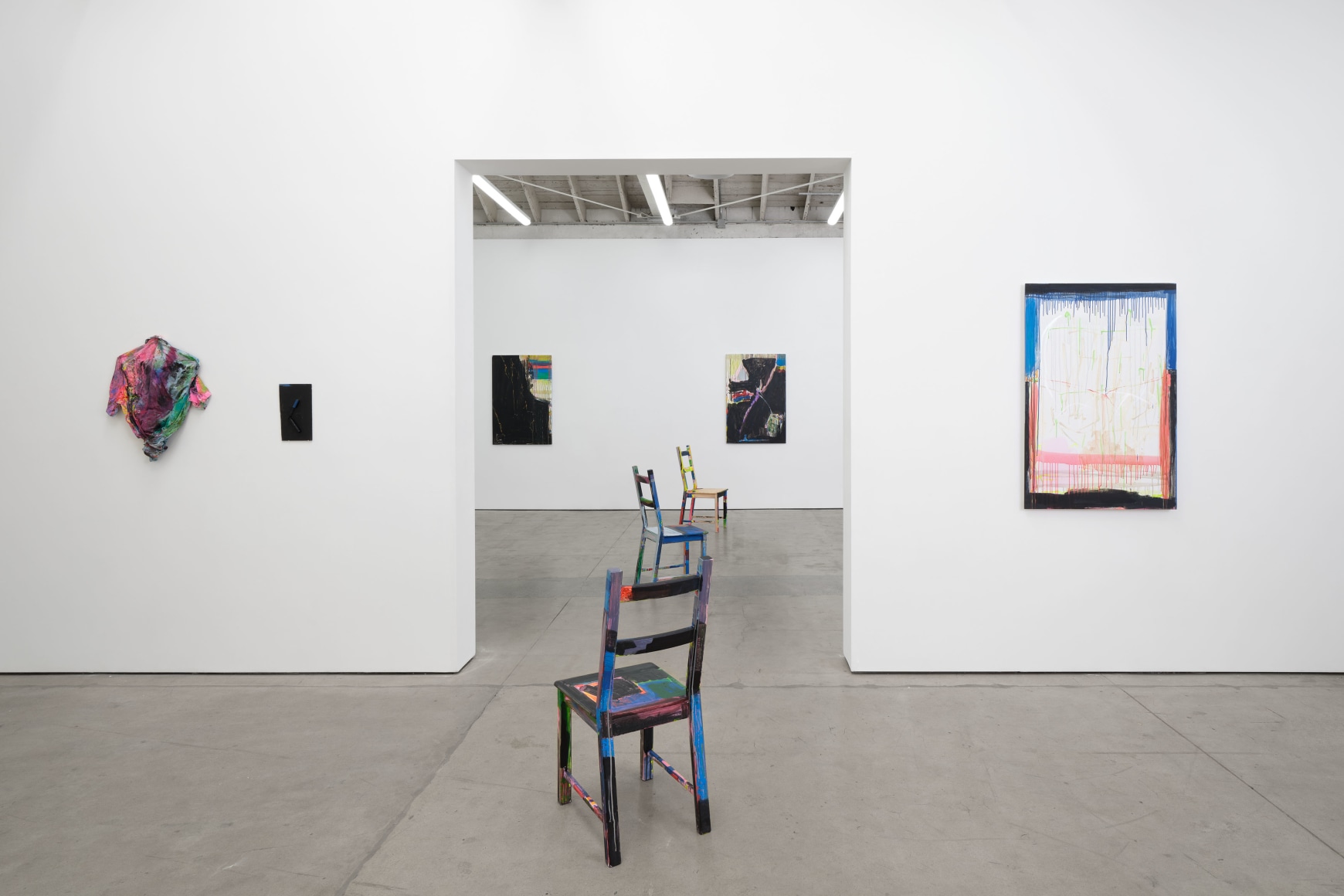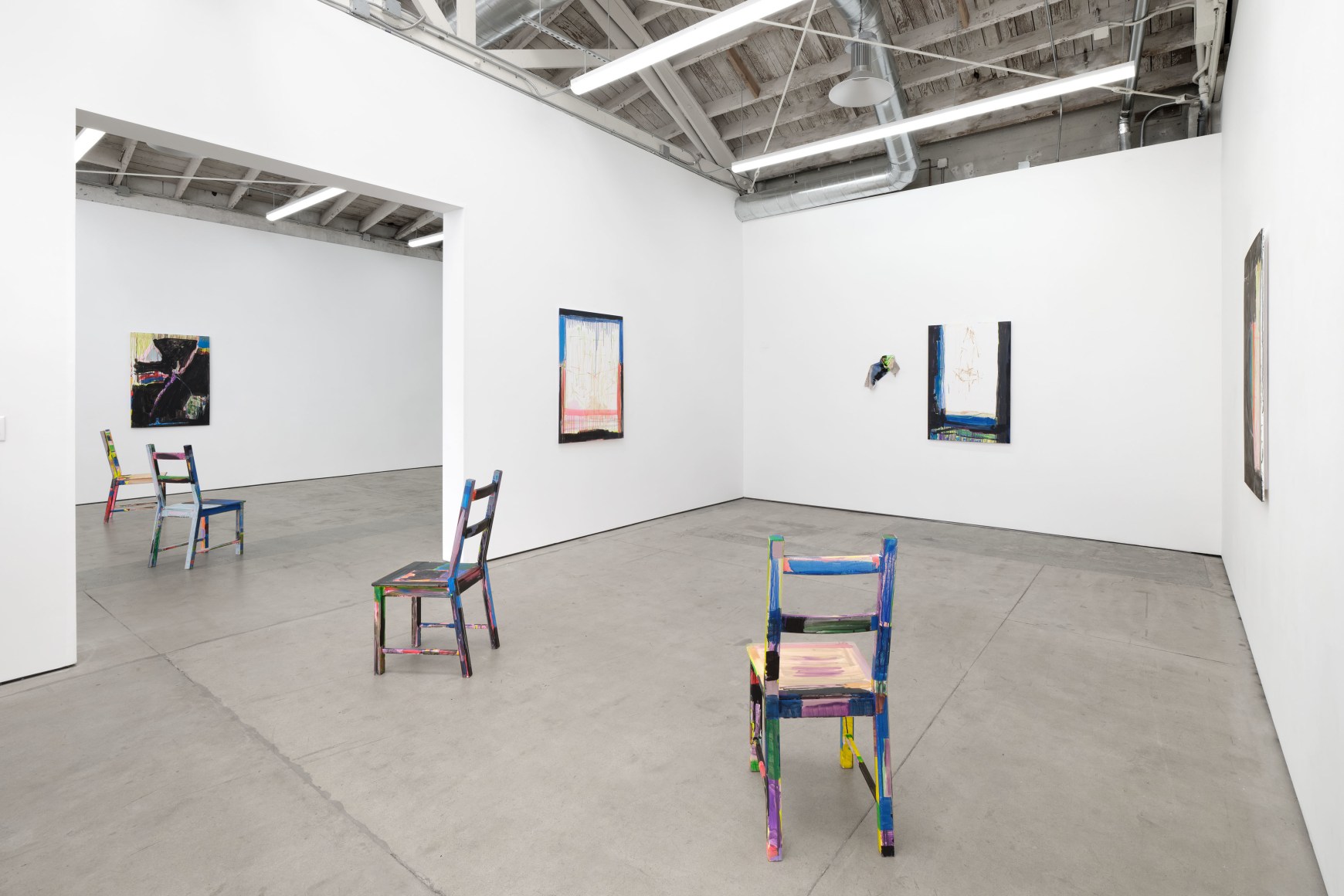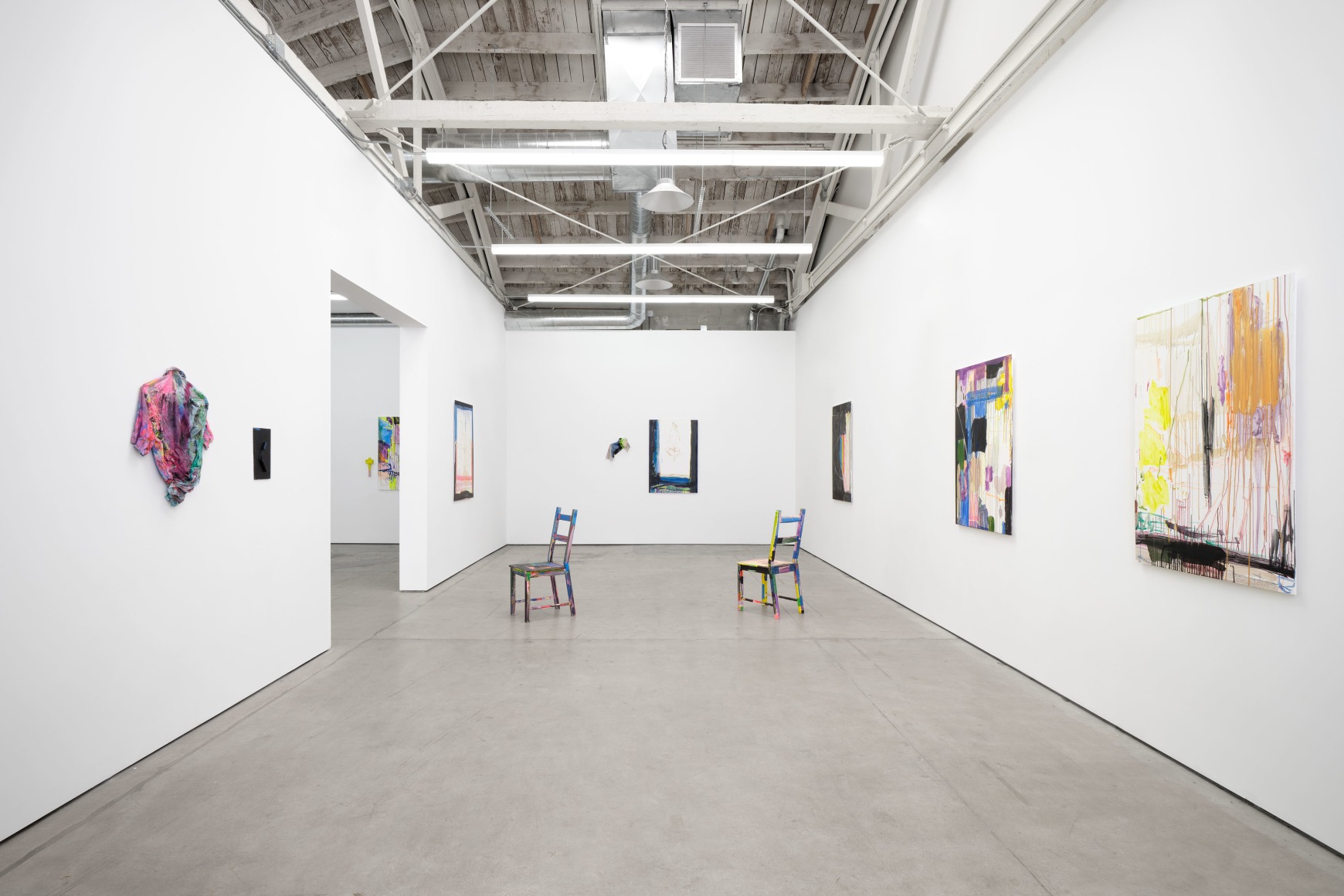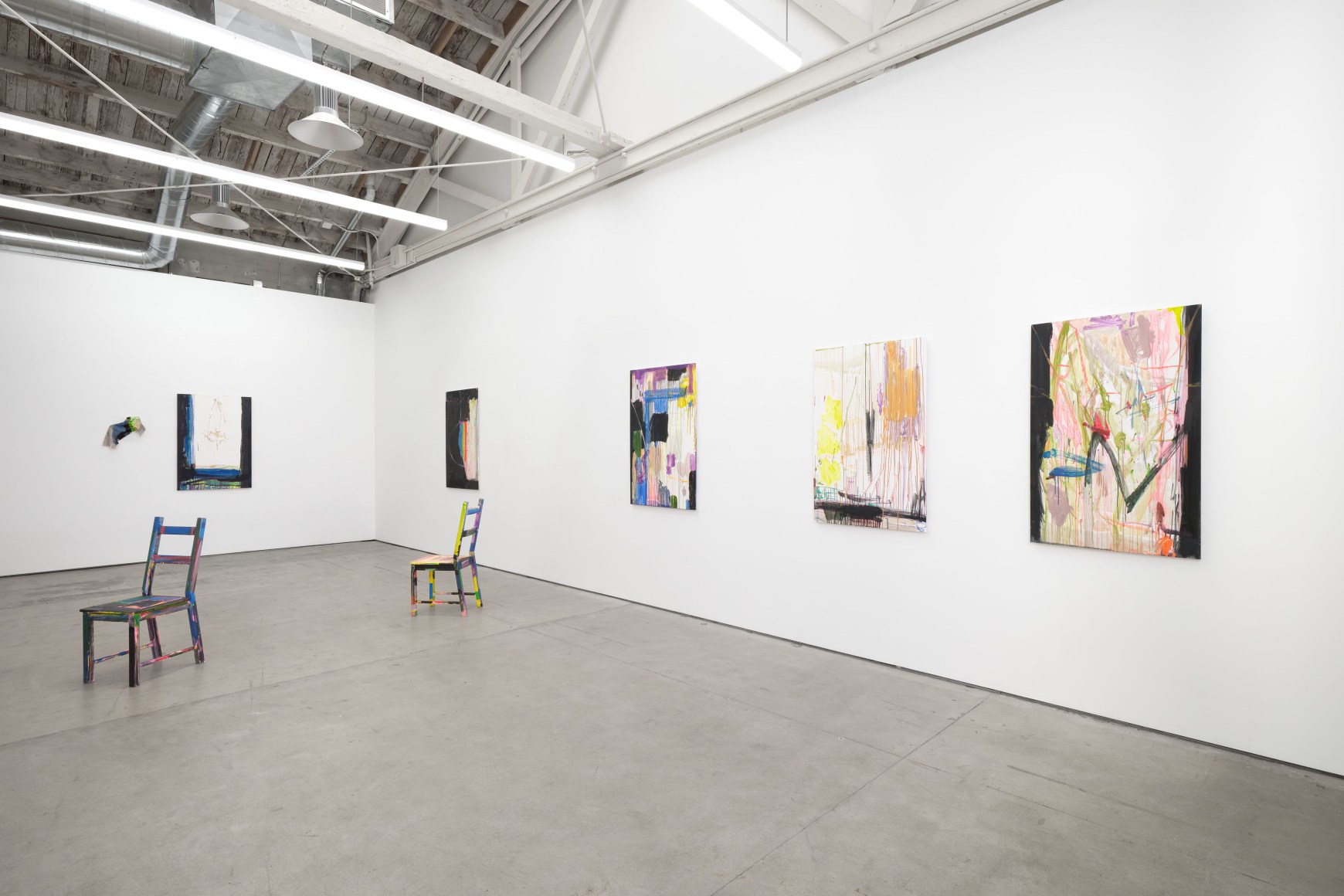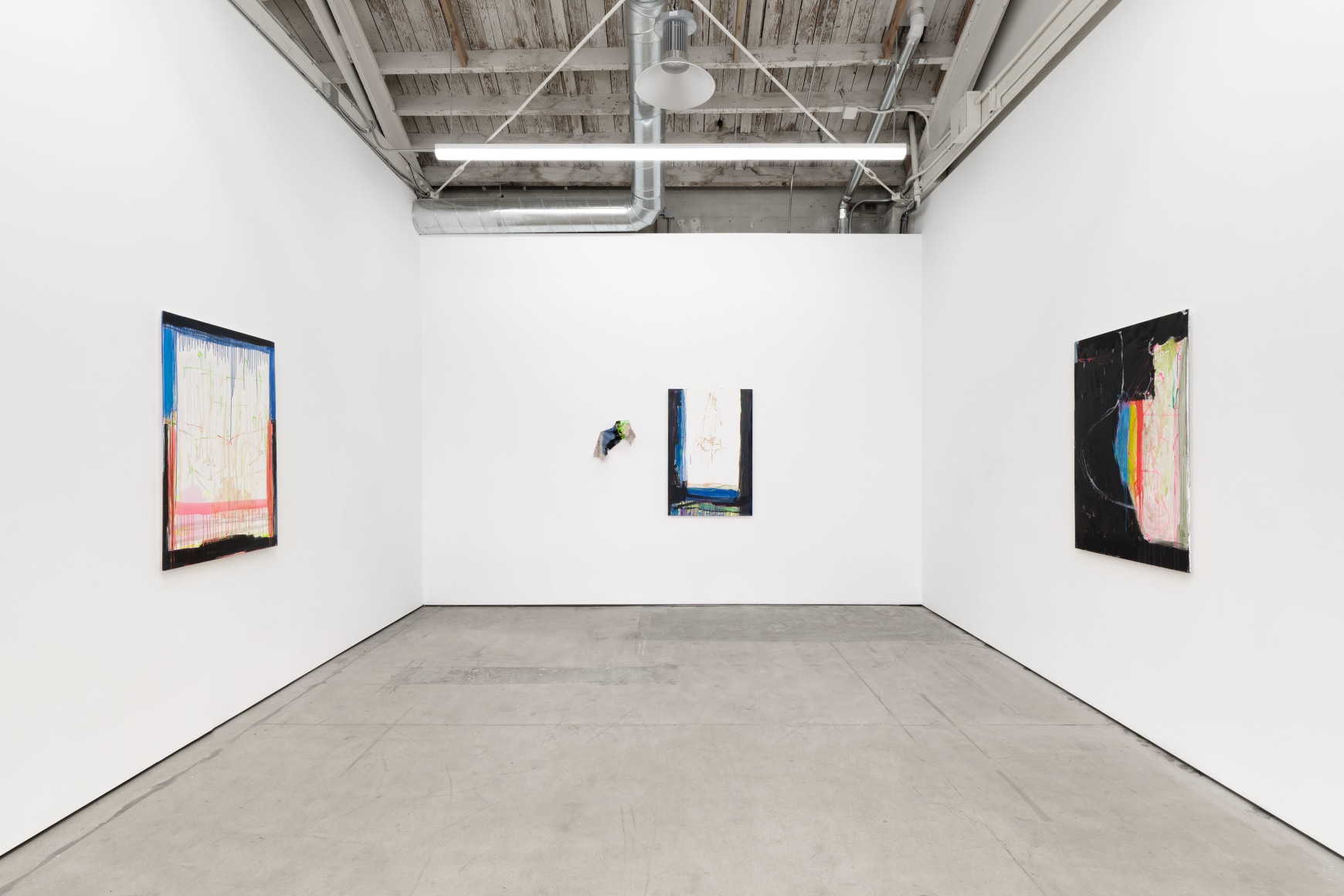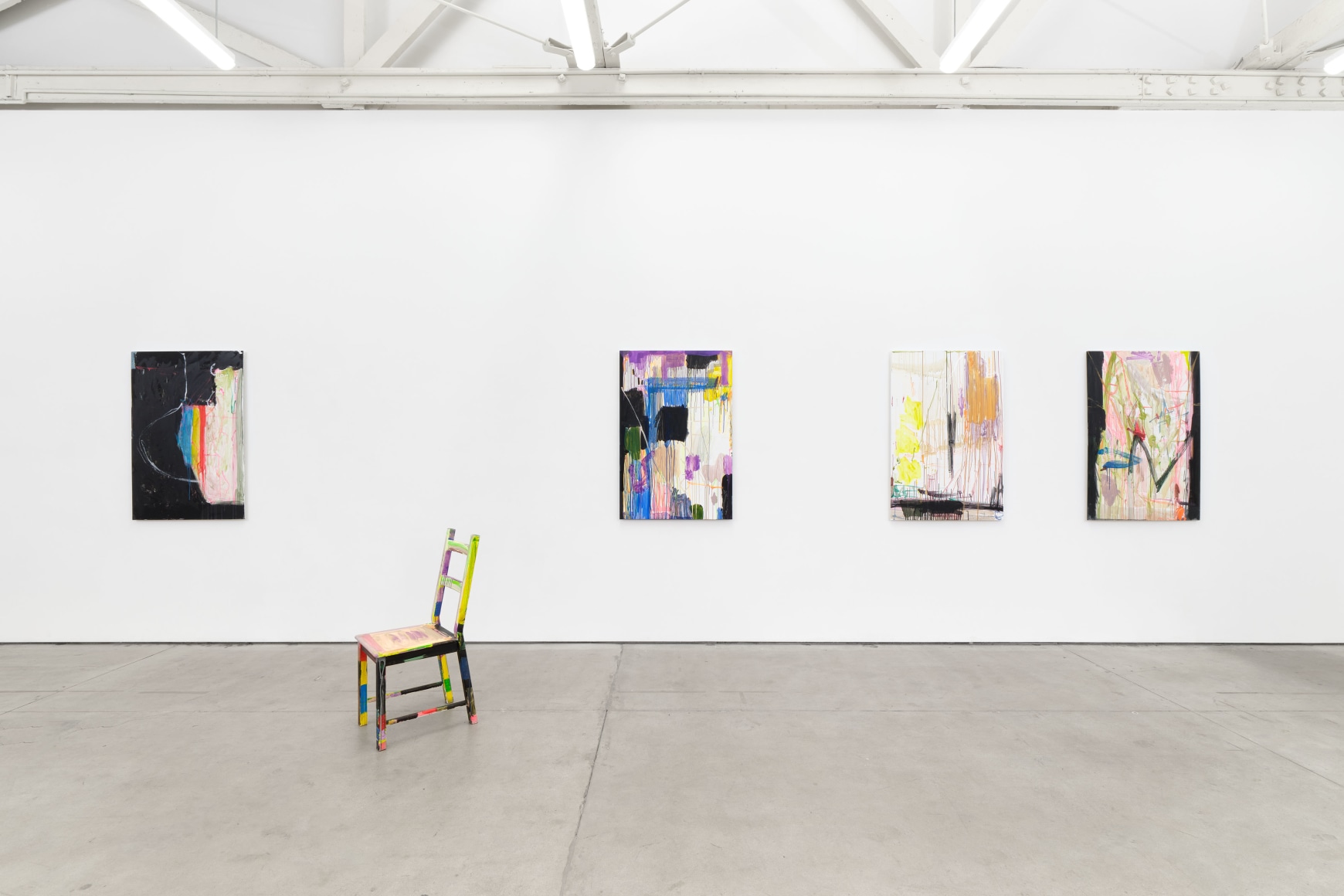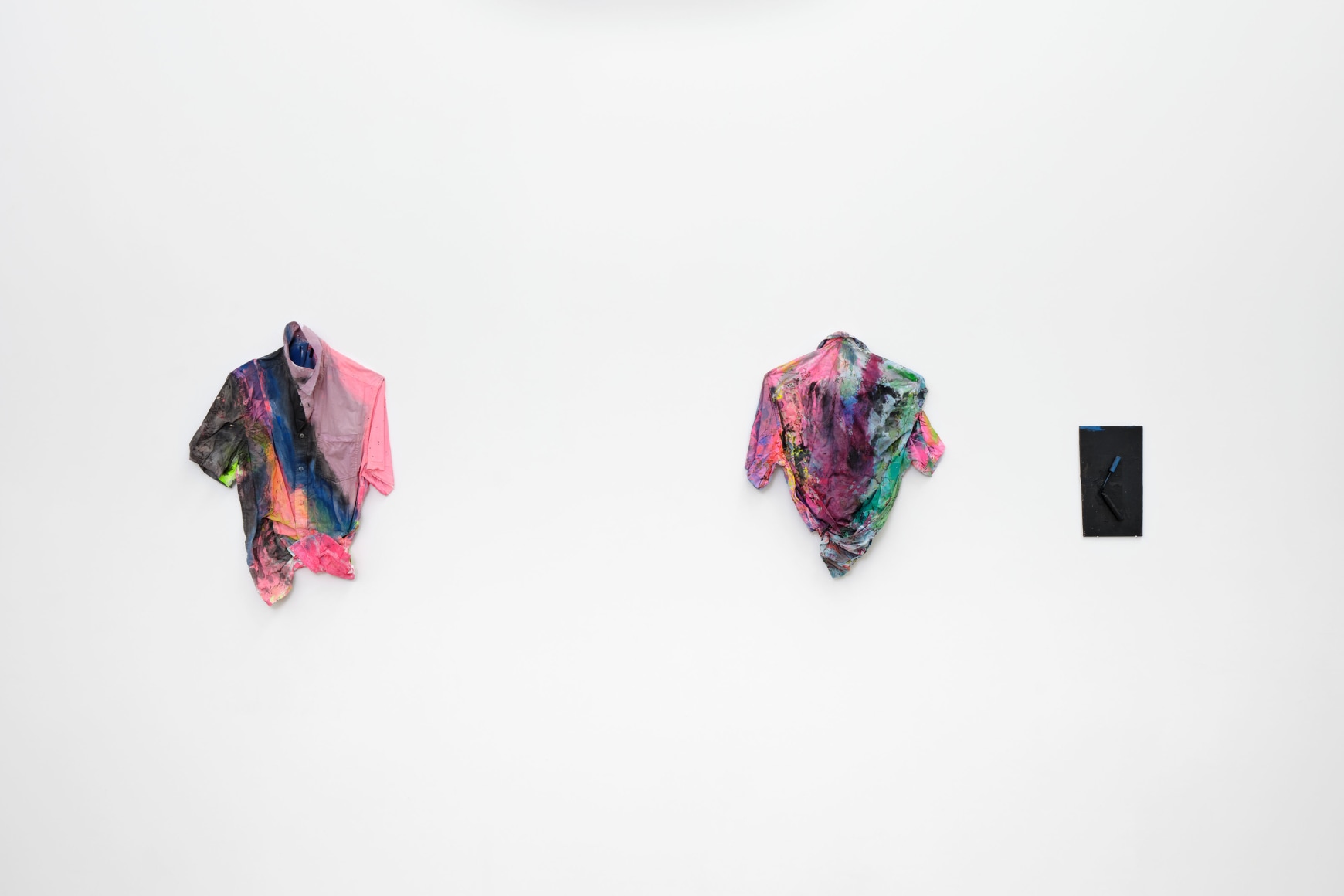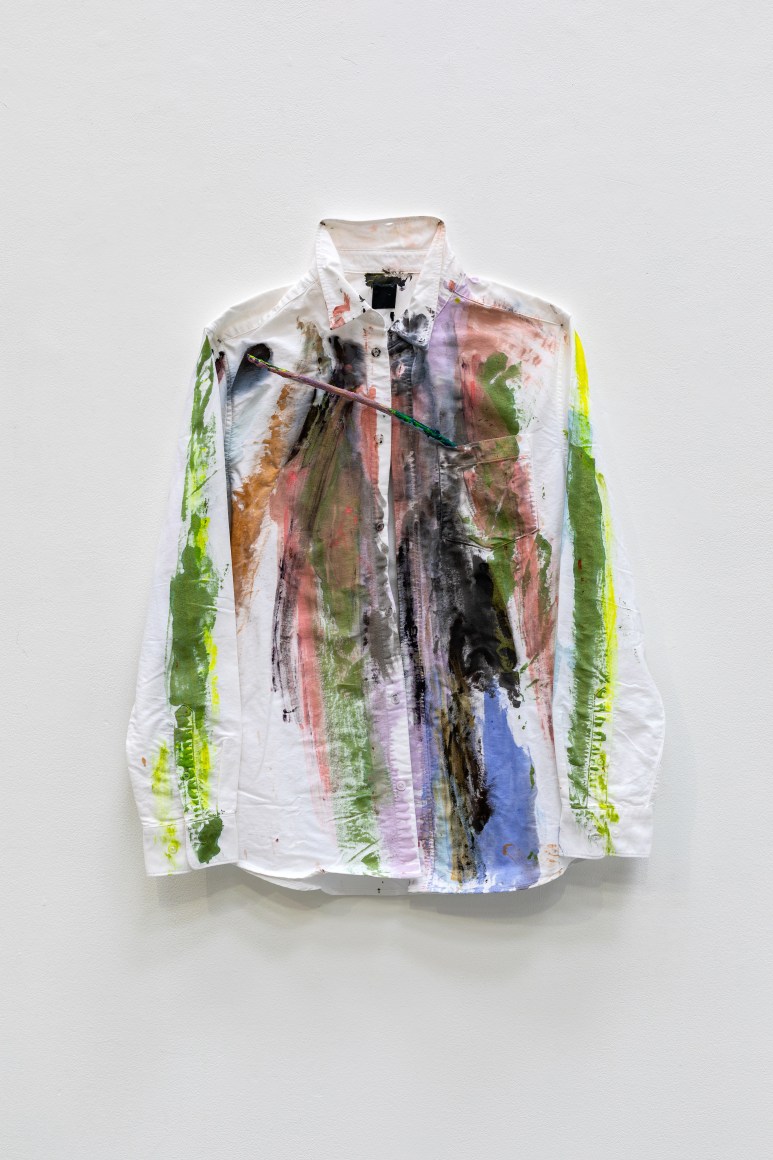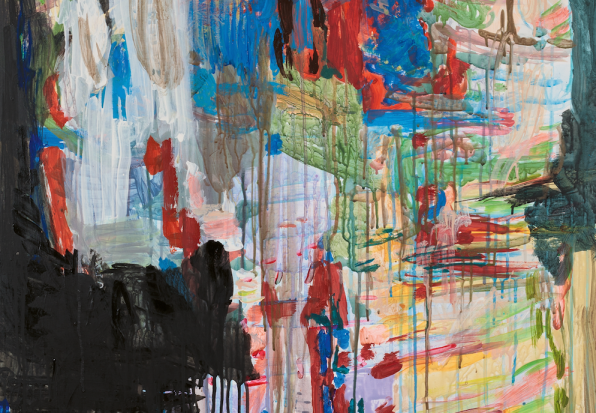
Matthew Brown is pleased to present Tell Gonzo How, a solo exhibition of recent works by British artist Hayley Tompkins. Glasgow-based Tompkins directs her gaze at everyday objects, imbuing them with a renewed presence.
The exhibition’s title refers to Gonzo Journalism, a mode in which the author reports from a first-person point of view. Championed in the 1960’s by figures such as Hunter S. Thompson, it is known for its highly subjective, informal, and meandering style, which situates a personal, autobiographical narrative within the broader “main story.” In this spirit, Tompkins eschews formal homogeneity and narrative linearity in favor of multilayered diegesis in which individual components supplement, complement, oppose, or append one another to form a varied totality.
Tompkins’ multicolored palette of vivid hues and earthen tones also revels in contrasts, bringing surface and depth, translucence and opacity, illusionism and materiality into a fractured yet harmonious whole. Often deploying vibrant pink, yellow, and green tones, punctuated by large swaths of deep black, she deftly applies acrylic paint to panels, chairs, shirts, tree branches, and other unconventional materials. Tompkins transforms the surfaces of these common, found, and mass-produced objects to produce works that vibrate with dynamism.
In lieu of a conventional canvas, Tompkins works on large-scale, quarter-inch wooden panels. Often, the centers are left loose and open while the bounds of the panel are articulated with black paint. Often, the outer edges are adorned with repeating sequences of stripes and bands. By calling our attention to the edges, Tompkins invites the viewer to contemplate the bounded nature of the picture plane. Panels such as Over the Lines and Falling Up (both 2023) are like windows into imaginary space: transparent and delimited.
Other panels like Speakpatched I and II (both 2022) offer a counterpoint to this delicate translucence. Comprised of thick layers of acrylic, they are densely saturated and markedly opaque. Instead of asserting the integrity of the picture plane, they assert the flatness and materiality of the work’s surface. Eschewing the conventional notion of the picture plane as an imaginary space offering optical entrance, they emphasize their concreteness to achieve what critic Roberta Smith described as “a resonant balance between the pictorial and the physical.”
Chairs purchased from the furniture behemoth IKEA continue this line of inquiry: Tompkins’ abstract drips and expressionist brushstrokes transform the seats of flat-pack wooden furniture into a hyper-contemporary flatbed picture plane. If a painting is understood to be a paint-covered surface supported by wooden armature, then Tompkins’ multi-colored chairs affirm that the designation “painting” is equally befitting of a chair as a wooden panel as a traditional canvas.
The same can be said of paint-stained menswear shirts, purchased new by the artist, distressed in the studio, and tacked up on the gallery walls aside Tompkins’ panels. Drawing an equivalence between the wooden panels, flat-pack chairs, and textile shirts, Tompkins posits a new conception of painting that projects beyond the imaginary confines of the picture plane and into real, physical space.
Tompkins’ shirts expand this gesture of replacement and substitution to bring in a human element. Inextricably linked to the bodies for which they were designed, Tompkins’ shirts they invoke a human presence vis-a-vis its apparent absence. Shirt stands for canvas, but also for human being, and part of a shirt stands for whole shirt, as in Was, Helio (2023), where a collar and sleeve fragment become a shorthand synecdoche.
The wrinkled, paint-smeared shirt, reminiscent of laundry laid out on an ironing board, belongs to our physical worldspace of matter and things. Yet is removed from the physical world of material objects once it is presented vertically on the wall as a picture for viewing. This dialectic interplay between the horizontal material object and vertical optical field once again invokes the human being by highlighting the progression from making to seeing and, in turn, the human agents who perform these acts (artist and viewer).
The tenuous balance between object and subject is also reflected in the shirt series’ title: This Shirt Says I Feel. In personifying the object, Tompkins suggests that it is not the artist, but the object that’s doing the talking or telling, perhaps even telling how. Paradoxically then, the personification of the object leads back to the subjective––to the highly personal, emotional, and multifaceted mode of Gonzo storytelling.
Throughout the exhibition, Tompkins reminds us that one thing can just as easily be another thing entirely. Expanding painting beyond the confines of the conventional canvas, she foregrounds spatial relations to investigate the act of looking itself. Rhythmic and ever-shifting, Tell Gonzo How posits painting as a form of transformation, transforming our conception of the medium in the process.
Hayley Tompkins (born 1971, Leighton Buzzard, England) lives and works in Glasgow. Recent solo exhibitions include Far, Fruitmarket Gallery, Edinburgh, UK (2022); Features, Andrew Kreps Gallery, New York (2022); After a Long Sleep, It Woke Up, The Modern Institute, Glasgow (2020); Bag of rainbow, Recent Activity, Birmingham, UK (2020).
Selected institutional exhibitions include Stick crystals to paintings, Bonner Kunstverein, Bonn, Germany (2018); Hayley Tompkins, Aspen Art Museum, CO (2013); Modern Modern, curated by Pati Hertling, Chelsea Art Museum, New York (2009); Salute to the Dataday, The Front Room (with Sue Tompkins), Contemporary Art Museum St. Louis, MO (2009).
Her work was featured in the 2012 São Paolo Biennial, and has been included in group exhibitions at the Tate Britain, London; Institute of Contemporary Arts, London; and the Hessel Museum at Bard College, Annandale-on-Hudson, NY. Tompkins was one of three artists chosen to represent Scotland at the 2013 Venice Biennale.

